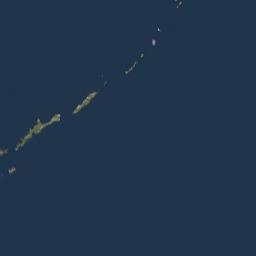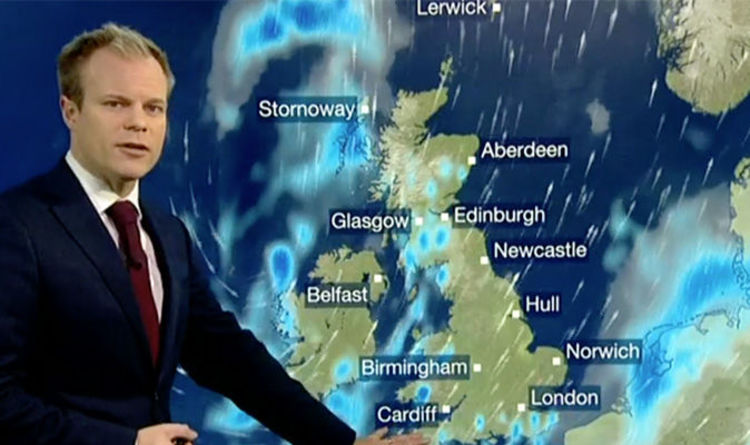Key West Weather
※ Download: Bbc weather key west
In an in-vision the narrator stands in front of the map. The BBC said that the on-air presenting team was not expected to change and it would still broadcast warnings from the Met Office and issued on behalf of the. As a result, the map was realigned, and the moving tour of the UK was lengthened.
The weather in Key West is characterized mainly by the wet and dry seasons. On 2 October 2000, BBC Weather underwent a more significant change.

Key West Weather - Wind gusts are shown in a grey symbol.

The numbers in the circle indicate the mean wind speed in the units you have chosen Miles per hour, Kilometres per hour or knots. The arrow points in the direction in which the wind is blowing relative to true north. Wind gusts are shown in a grey symbol. Temperature symbols Forecast table The number in the bar indicates the temperature in the units you have selected Celsius or Fahrenheit. The height and colour of each bar represents the temperature at that time, the lowest temperature being blue and the warmest being red Homepage widget The number in the square indicates the temperature in the units you have selected Celsius or Fahrenheit. The squares are coloured depending on the temperature with the lowest being blue and the warmest being red. Feels like temperature Feels like temperature takes into account wind speed and relative humidity to give a more representative indication of how the temperature will feel. For example if the temperature is 0 °C it will feel much colder with a wind speed of 25 than with a wind speed of 10. Feels like temperature is displayed in the units you have selected Celsius or Fahrenheit. The squares are coloured depending on the temperature with lowest being blue and the warmest being red. Temperature Maps The temperature is displayed in the units you have selected Celsius or Fahrenheit. Solar UV Symbols The strength of the sun's ultraviolet UV radiation is expressed as a 'Solar UV Index', a system developed by the. The solar index does not exceed 8 in the UK 8 is rare; 7 may occur on exceptional days, mostly in the two weeks around the summer solstice. Indices of 9 and 10 are common in the Mediterranean area. UV index Exposure category Protection required Low None. You can safely stay outside. Moderate Take care during midday hours and do not spend too much time in the sun unprotected. High Seek shade during midday hours, cover up and wear sunscreen. Very high Spend time in the shade between 11 and 3. Shirt, sunscreen and hat essential Extreme Avoid being outside during midday hours. Shirt, sunscreen and hat essential Rainfall radar Satellite imagery Visible images Visible images record visible light from the sun reflected back to the satellite by cloud tops and land and sea surfaces. They are equivalent to a black and white photograph from space. They are better able to show low cloud than infrared images low cloud is more reflective than the underlying land or sea surface. However, visible pictures can only be made during daylight hours. Infrared images The infrared image shows the invisible infrared radiation emitted directly by cloud tops and land or ocean surfaces. The warmer an object is, the more intensely it emits radiation, thus allowing us to determine its temperature. These intensities can be converted into greyscale tones, with cooler temperatures showing as lighter tones and warmer as darker. Lighter areas of cloud show where the cloud tops are cooler and therefore where weather features like fronts and shower clouds are. The advantage of infrared images is that they can be recorded 24 hours a day. However, low cloud, having similar temperatures to the underlying surface, are less easily discernable. Visibility definitions Description Range Unknown - Very poor Less than 1 km Poor Between 1-4 km Moderate Between 4-10 km Good Between 10-20 km Very good Between 20-40 km Excellent More than 40 km Our visibility forecasts do not routinely take into account the effect of smoke e. The forecast represents an hourly period for days one to two of the five day forecast and a three-hour period for days three to five. The Precipitation Probability is given as a percentage % to the nearest 5% - it indicates how likely it is that any precipitation will fall during that period at the selected location. Note that this does not mean the probability that it will be raining, snowing, hailing etc. Pollen count Pollen count forecasts are displayed using the following key: Daily air quality index Daily index representing the background and regional air quality for a chosen location. Take a look at the page for more information on the daily air quality index or the. Air pollution levels close to roads or urban centres may be higher. For the latest information check the. Air pollution banding Value Accompanying health messages for at-risk groups and the general population At-risk individuals General population Low 1-3 Enjoy your usual outdoor activities Enjoy your usual outdoor activities Moderate 4-6 Adults and children with lung problems, and adults with heart problems, who experience symptoms, should consider reducing strenuous physical activity, particularly outdoors. Enjoy your usual outdoor activities High 7-9 Adults and children with lung problems, and adults with heart problems, should reduce strenuous physical exertion, particularly outdoors, and particularly if they experience symptoms. People with asthma may find they need to use their reliever inhaler more often. Older people should also reduce physical exertion Anyone experiencing discomfort such as sore eyes, cough or sore throat should consider reducing activity, particularly outdoors. Very High 10 Adults and children with lung problems, adults with heart problems, and older people, should avoid strenuous physical activity. People with asthma may find they need to use their reliever inhaler more often Reduce physical exertion, particularly outdoors, especially if you experience symptoms such as cough or sore throat. At-risk individuals includes adults and children with heart or lung problems are at greater risk of symptoms. Follow your doctor's usual advice about exercising and managing your condition. It is possible that very sensitive individuals may experience health effects even on low air pollution days. Anyone experiencing symptoms should follow the guidance on the page. Tide Times Tide times are available for around 500 locations. To view Tide Times for a desired location, enter a beach location into the search box and click on your chosen location. Tide tables are displayed beneath the weather forecast for up to five days ahead. Tidal data is supplied by Severe weather warnings Warnings are colour coded red, amber, yellow depending on the likelihood and potential impact of severe weather. Surface pressure charts Cold front The leading edge of an advancing colder air mass. Occluded front or 'occlusion' Occlusions form when the cold front of a depression catches up with the warm front, lifting the warm air between the fronts into a narrow wedge above the surface. Occluded fronts bring cloud and precipitation. Cloud and precipitation becomes increasingly fragmented. For instance, the passage of an upper warm front may bring warmer air at an altitude of 10,000 ft, without bringing a change of air mass at the surface. Quasi-stationary front A stationary or slow-moving boundary between two air masses. Cloud and precipitation are usually associated. Isobars Contours of equal mean sea-level pressure MSLP , measured in hectopascals hPa. MSLP maxima anticyclones and minima depressions are marked by the letters H High and L Low on weather charts. Thickness lines Pressure decreases with altitude, and thickness measures the difference in height between two standard pressure levels in the atmosphere. It is proportional to the mean temperature of this layer of air, so is a useful way of describing the temperature of an airmass. Cold, polar air has low thickness, and values of 528 dam or less frequently bring snow to the UK. Conversely, warm, tropical air has high thickness, and values in excess of 564 dam across the UK often indicate a heatwave. Trough An elongated area of relatively low surface pressure. The troughs marked on weather charts may also represent an area of low thickness thickness trough , or a perturbation in the upper troposphere upper trough. All are associated with increasing cloud and risk of precipitation. Convergence line A slow-moving trough, which is often parallel to the isobars and tends to be persistent over many hours. They are quite common in cold northerly outbreaks down the Irish Sea, affecting west Wales, Devon and Cornwall in particular, but can be found in other areas also. In summer the convergence lines are not as easy to forecast, but then can still occur due to sea-breeze convergence, and are over the land, whilst in winter they are over the sea. Last updated: 17 May 2018.
The first was abroadcast on the radio on behalf of the on 14 November 1922, and the first daily weather forecast was broadcast on 26 March 1923. In 1962, the installation of a and an in the Met Office led to more accurate and quicker forecasting. Graphical technology presents a weather forecast in 1974. For example if the temperature is 0 °C it will feel much colder with a wind speed of 25 than with a wind speed of 10. Infrared images The infrared image shows the invisible infrared radiation emitted directly by cloud tops and land or ocean surfaces. Sunny intervals and a moderate breeze Sunny and a gentle breeze Sunny intervals and a moderate breeze Sunny and a moderate breeze Sunny intervals and a gentle breeze Sunny intervals and a gentle breeze Sunny and a gentle breeze Sunny and a gentle breeze Sunny and a moderate breeze Sunny and a moderate breeze Sunny and a gentle breeze Sunny and a moderate breeze Sunny and a gentle breeze Sunny and a gentle breeze. However, the live feed has gone blank, as the signal from the video camera cut off the world from the scenes of growing destruction. Feels like temperature Feels like temperature takes into bbc weather key west wind speed and relative humidity to give a more representative indication of how the temperature will feel. Retrieved 15 February 2018. Occluded fronts bring cloud and precipitation.




